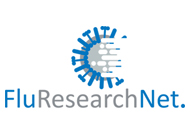Abd El Rahman, S., El-Kenawy, A.A., Neumann, U., Herrler, G., Winter, C. Comparative analysis of the sialic acid binding activity and the tropism for the respiratory epithelium of four different strains of avian infectious bronchitis virus. (2009). Avian Pathol. 38: 41-45.Bauer K, Richter M, Wutzler P, Schmidtke M. Different neuraminidase inhibitor susceptibilities of human H1N1, H1N2, and H3N2 influenza A viruses isolated in Germany from 2001 to 2005/2006. (2009). Antiviral Res 82:34-41.Dürrwald R, Krumbholz A, Baumgarte S, Schlegel M, Vahlenkamp TW, Selbitz HJ, Wutzler P, Zell R. Swine influenza A vaccines, pandemic (H1N1) 2009 virus, and cross-reactivity. (2009). Emerg Infect Dis 16:1029-1030.Ehrhardt, C and Ludwig, S. A new player in a deadly game: influenza viruses and the PI3K/Akt signalling pathway. (2009).Cell. Microbiol. Jun;11(6):863-71.Krumbholz A, Schmidtke M, Bergmann S, Motzke S, Bauer K, Stech J, Dürrwald R, Wutzler P, Zell R. High prevalence of amantadine resistance among circulating European porcine influenza A viruses. (2009). J Gen Virol 90:900-908.Kugel, D., Kochs, G., Obojes, K., Roth, J., Kobinger, G. P., Kobasa, G., Haller, O., Staeheli, P. & V. von Messling. Intranasal administration of alpha interferon reduces seasonal influenza A virus morbidity in ferrets. (2009). J. Virol. 83: 3843-3851.Ludwig, S. and Wolff, T.Influenza A virus TRIMs the type I interferon response. (2009). Cell Host Microbe 5, 420-421.Ludwig, S. Targeting cell signalling pathways to fight the flu: towards a paradigm change in anti-influenza therapy. (2009). J. Antimicrob. Chemother. Jul;64(1):1-4.Pauli E.K., Schmolke M., Hofmann H., Ehrhardt C., Flory E., Münk C. and Ludwig S. High level expression of the anti-retroviral protein APOBEC3G is induced by influenza A virus but does not confer antiviral activity. (2009). Retrovirology. 6:38.Planz O, Pleschka S, Wolff T.Borna disease virus: a unique pathogen and its interaction with intracellular signalling pathways. (2009). Cell Microbiol. 11(6):872-9.Pleschka, S., Ludwig, S., Planz, O. and Wolff, T. Signaling pathways induced by Influenza p. 109-129. In: D. Yang (Ed.), Host gene responses to RNA viral infection. (2009). World Scientific Publishing. New York-London-Singapur.Pleschka, S. Understanding bird flu transmission and pathogenesis. (2009). Public Service Review: Science Technology. Iss. 3. PSCA International. Newcastle-under-Lyme, ISSN 1757-2770.Pleschka. S.and Ludwig, S. A promising pathway. (2009). Public Service Review: Science Technology. Iss. 3. PSCA International. Newcastle-under-Lyme. ISSN 1757-2770.Pleschka, S., Ludwig, S., Planz, O. and Wolff, T. Signaling Pathways Induced by Influenza Viruses in “RNA Viruses: Host Gene Response to Infection”. (2009). Yeng, D. (ed). World Scientific Publishing. ISBN 978-981-283-379-2.Schmolke, M., Viemann, D., Roth, J. and Ludwig, S.Essential Impact of NF-kB Signaling on the H5N1 Influenza A Virus-Induced Transcriptome. (2009). J. Immunol. 183, 5180-5189.Srivastava, B., P. Blazejewska, M. Hessmann, D. Bruder, R. Geffers, S. Mauel, A. D. Gruber, and K. Schughart.Host genetic background strongly influences the response to influenza a virus infections. (2009). PLoS ONE 4:e4857.Van Hoeven, N., Belser, J. A., Szretter, K. J., Zeng H, Staeheli, P., Swayne, D. E., Katz, J. M., and T. M. Tumpey. Pathogenesis of the 1918 pandemic and H5N1 influenza virus infections in a guinea pig model: antiviral potential of exogenous alpha interferon to reduce virus shedding. (2009). J. Virol. 83: 2851-2861.Wolff, T. and Ludwig, S.Influenza viruses control the vertebrate type I interferon system: factors, mechanisms, and consequences. (2009). J Interferon Cytokine Res. 29(9):549-57.
